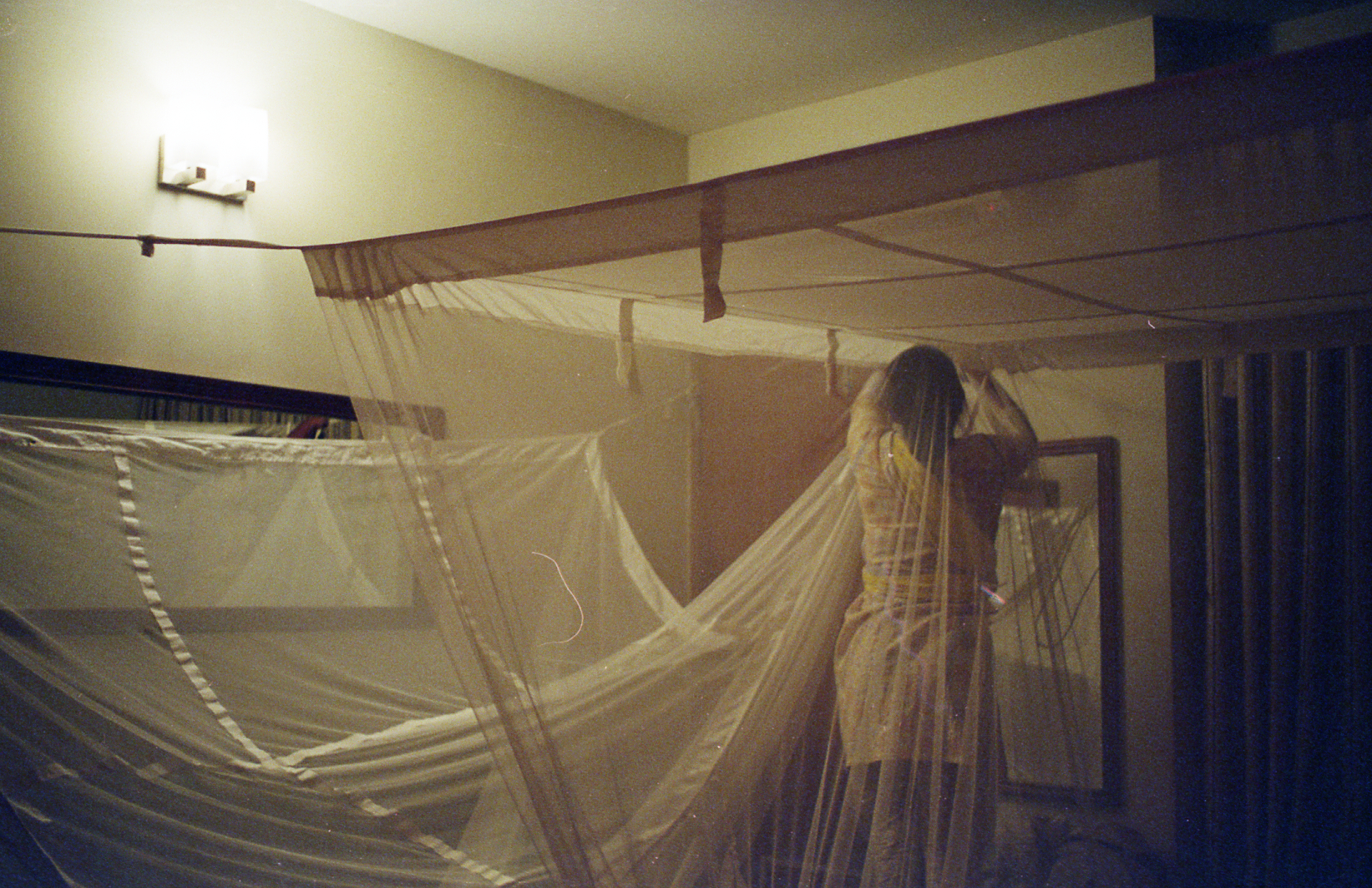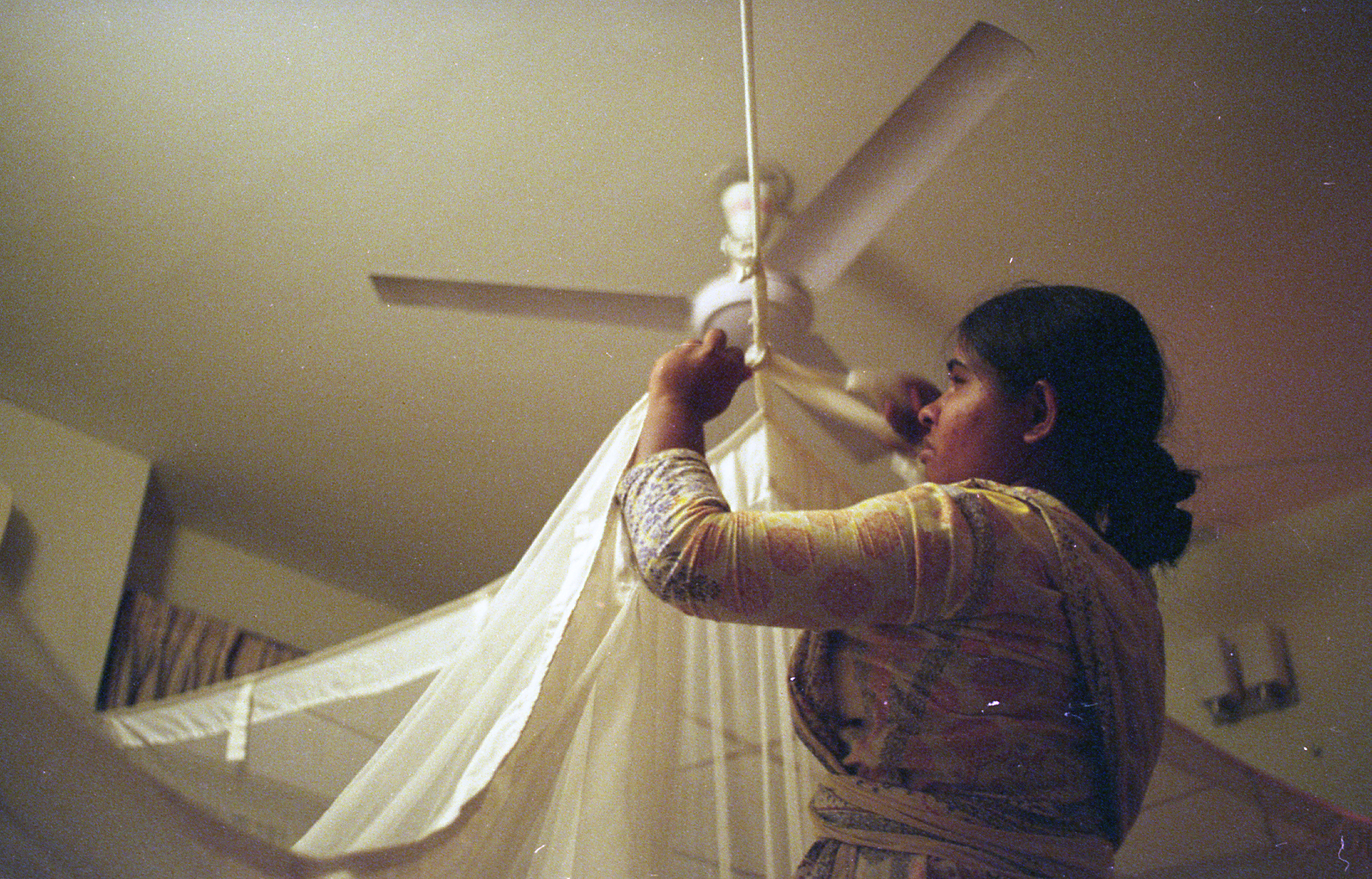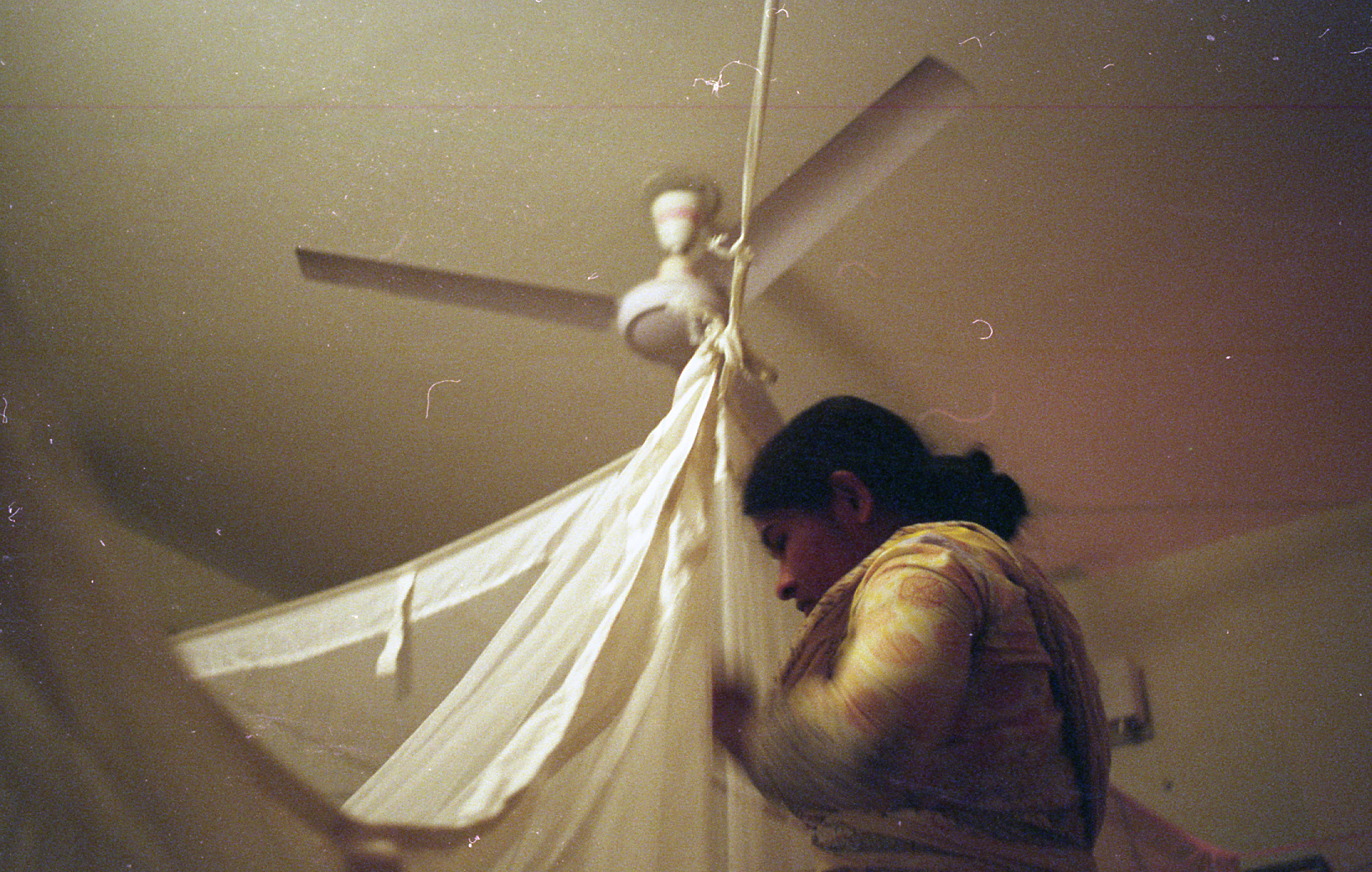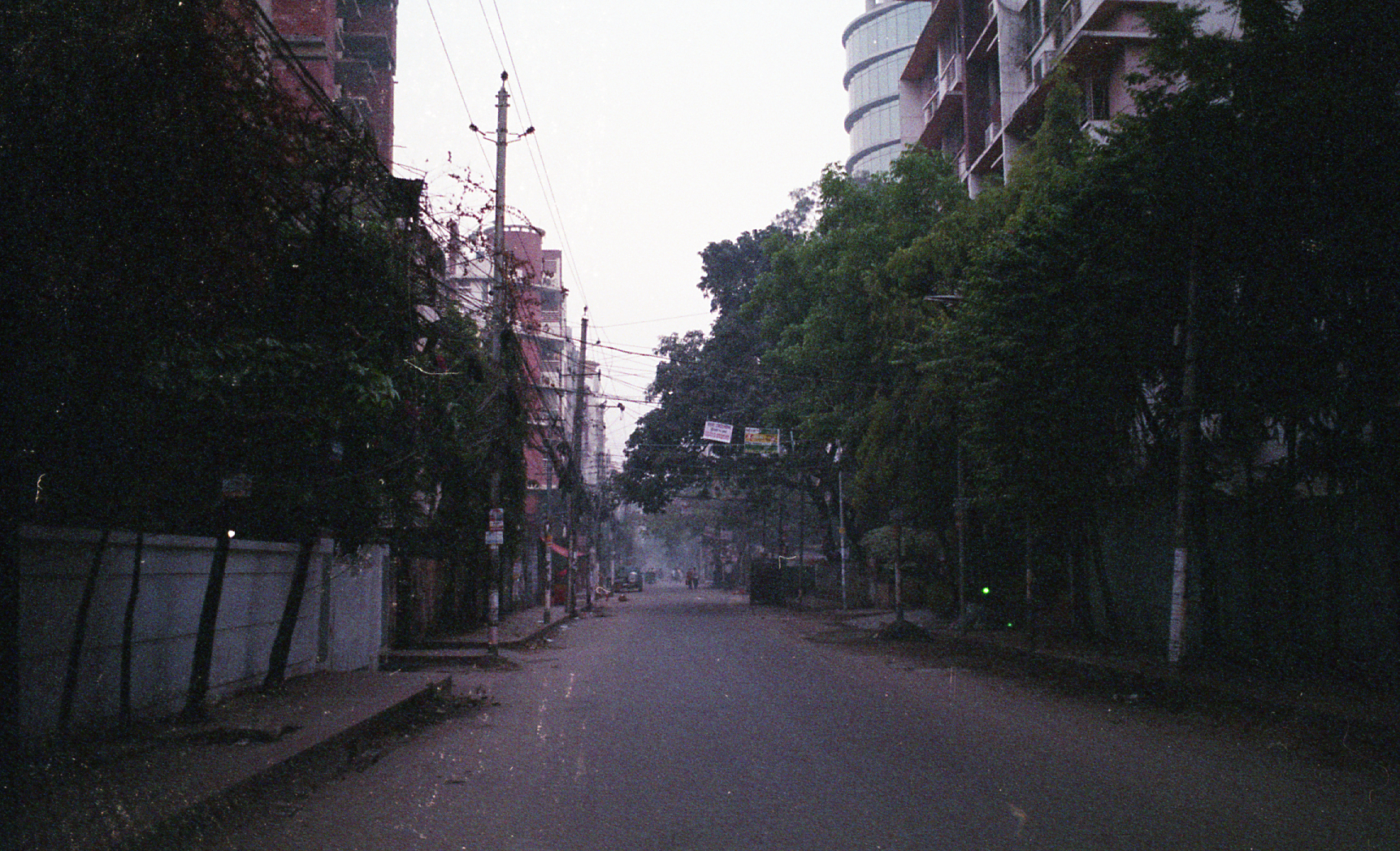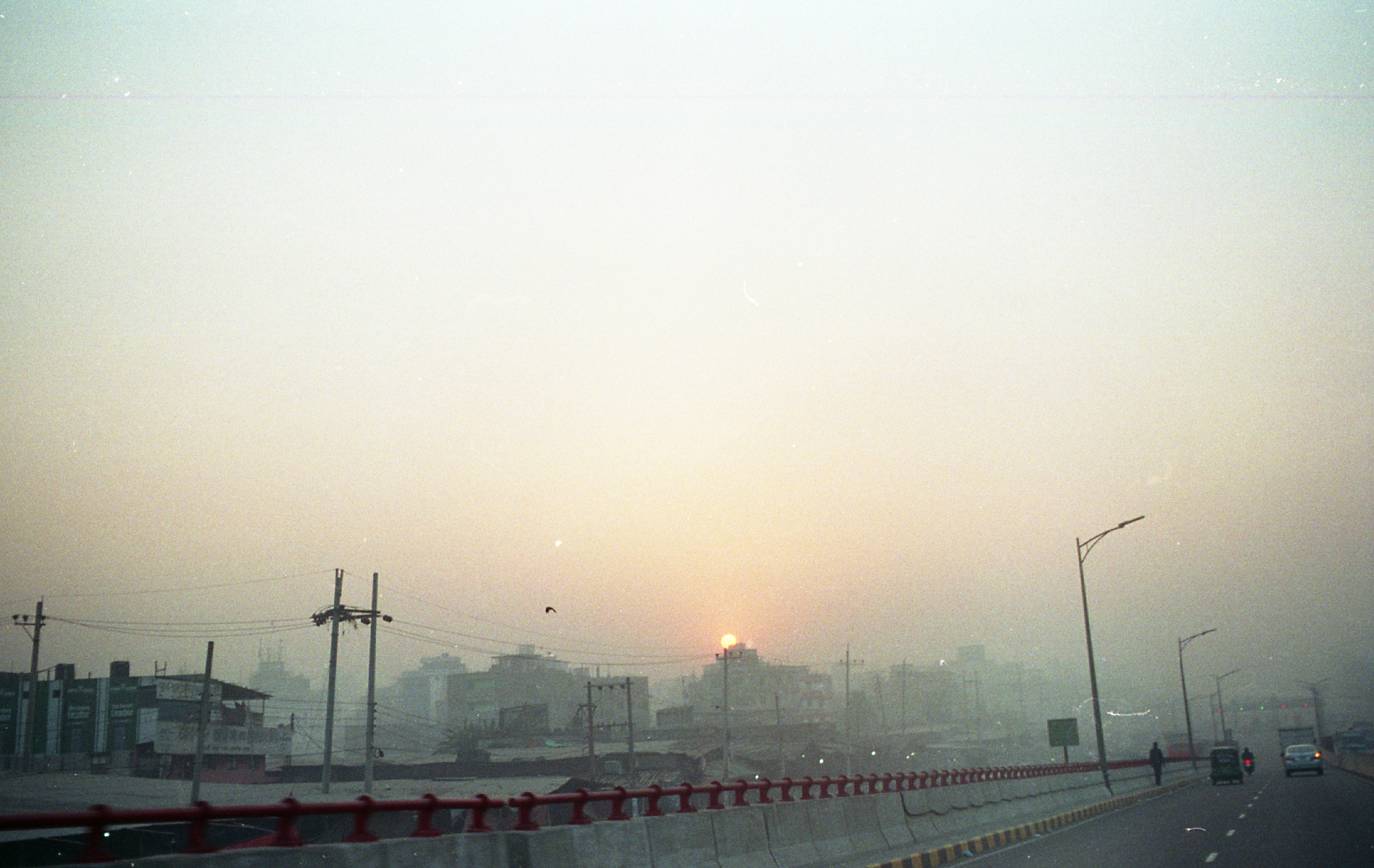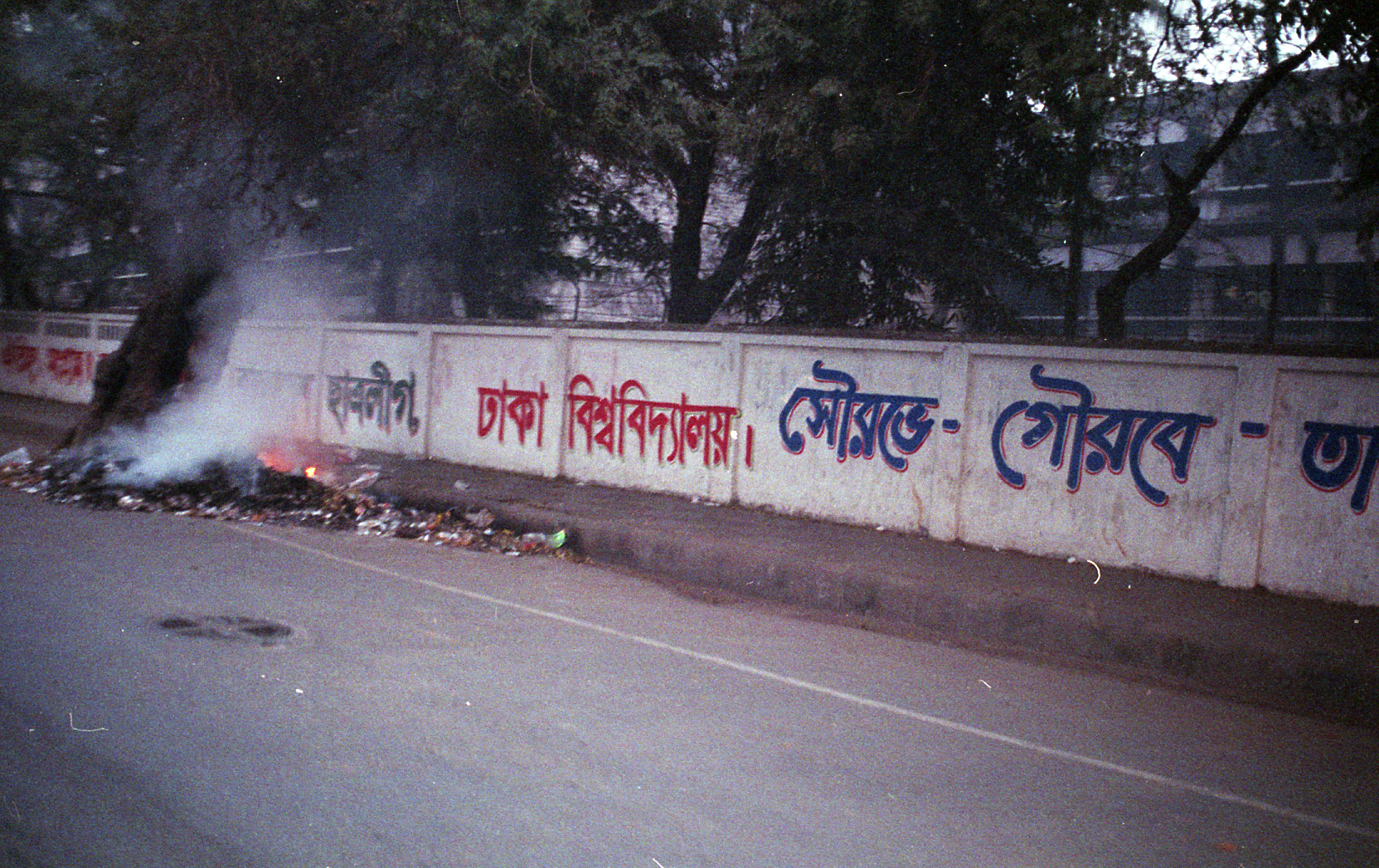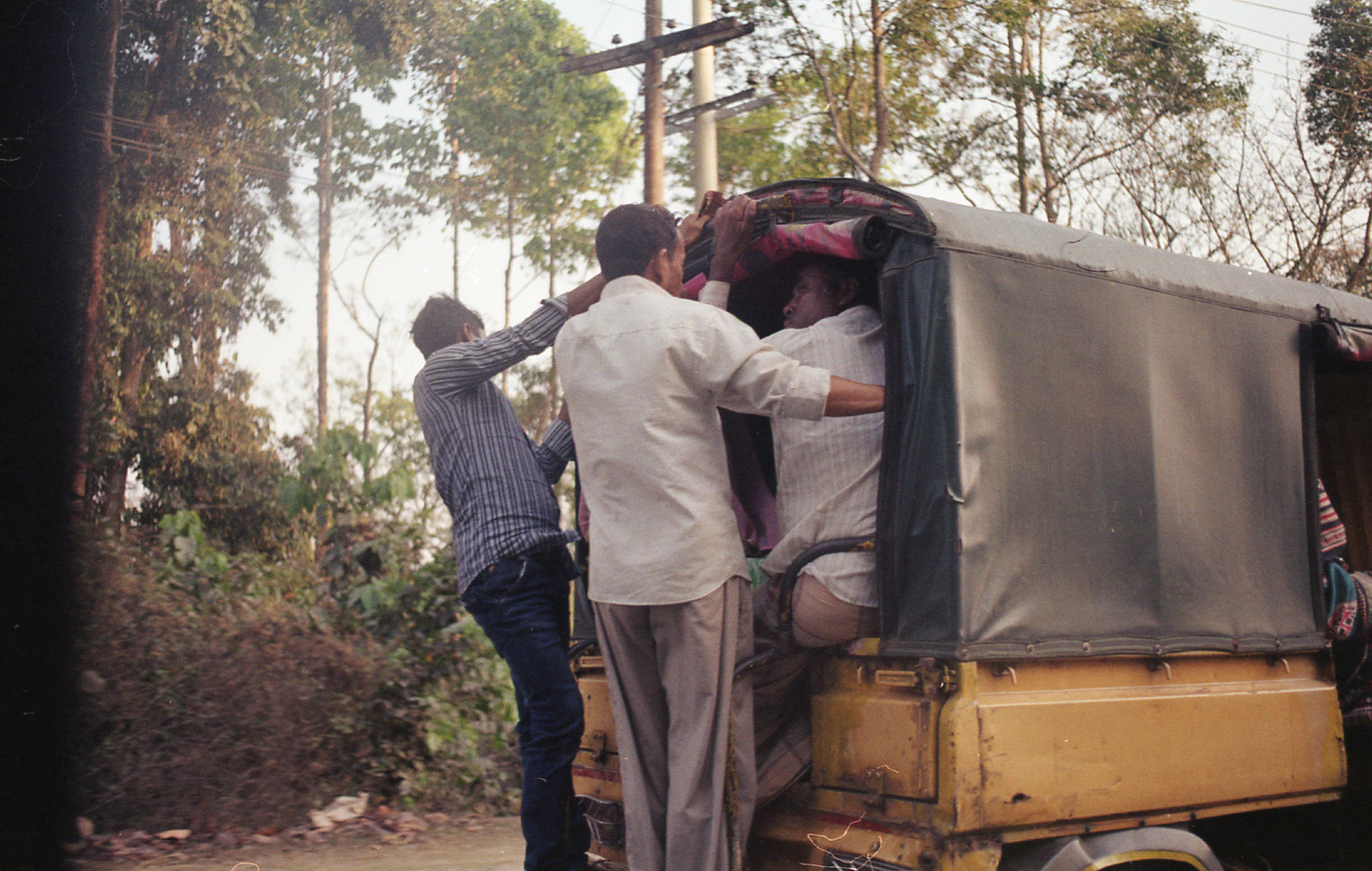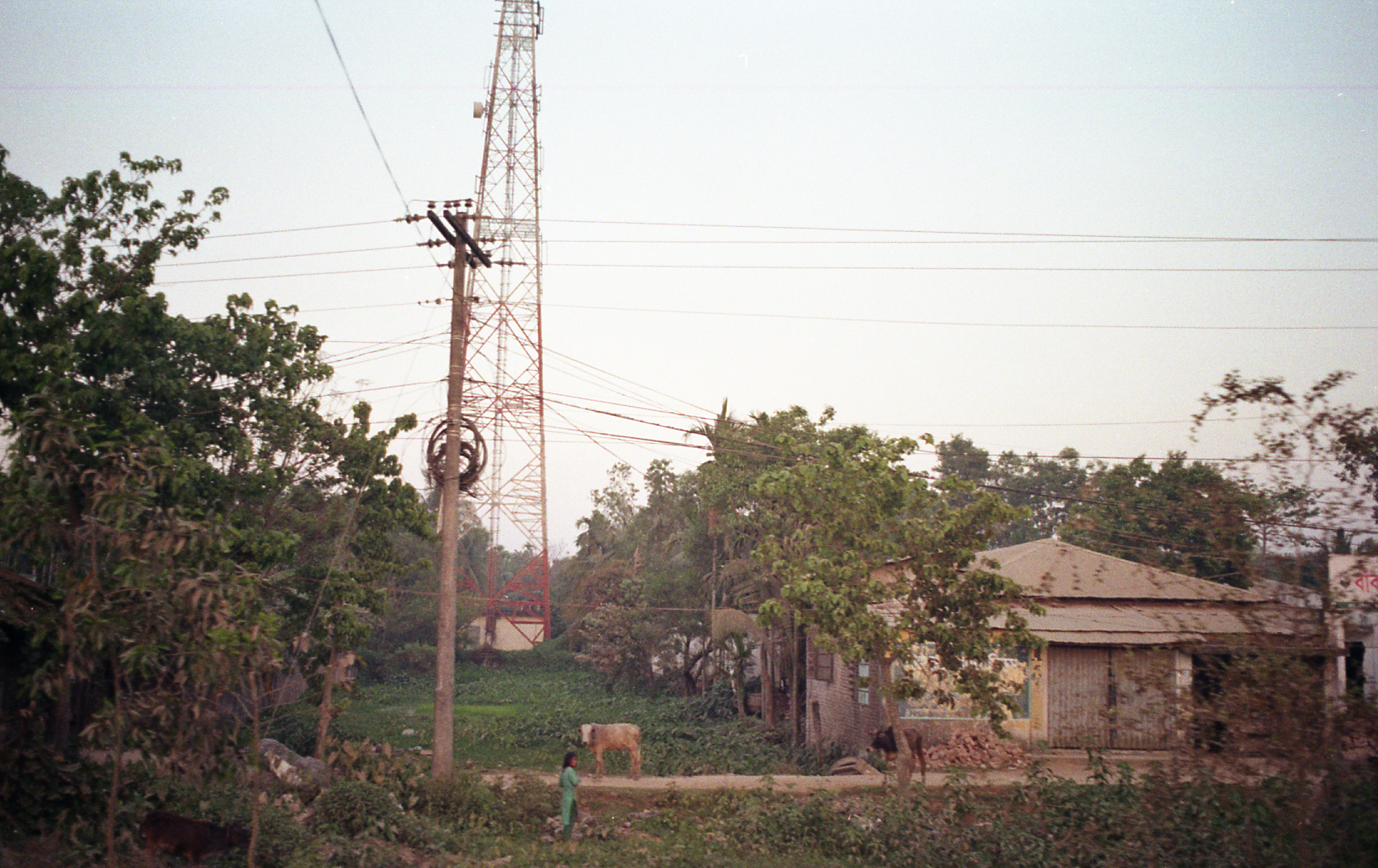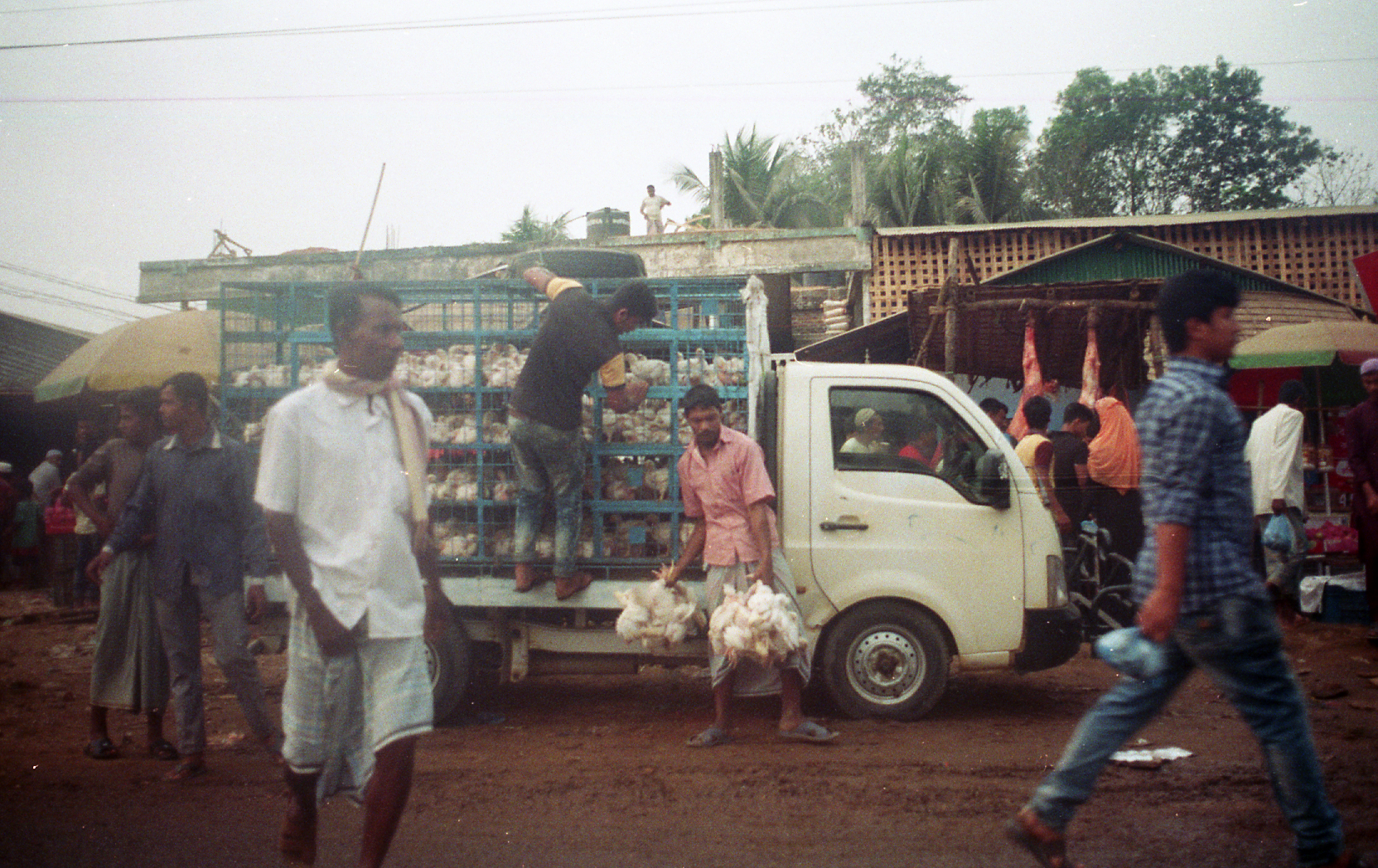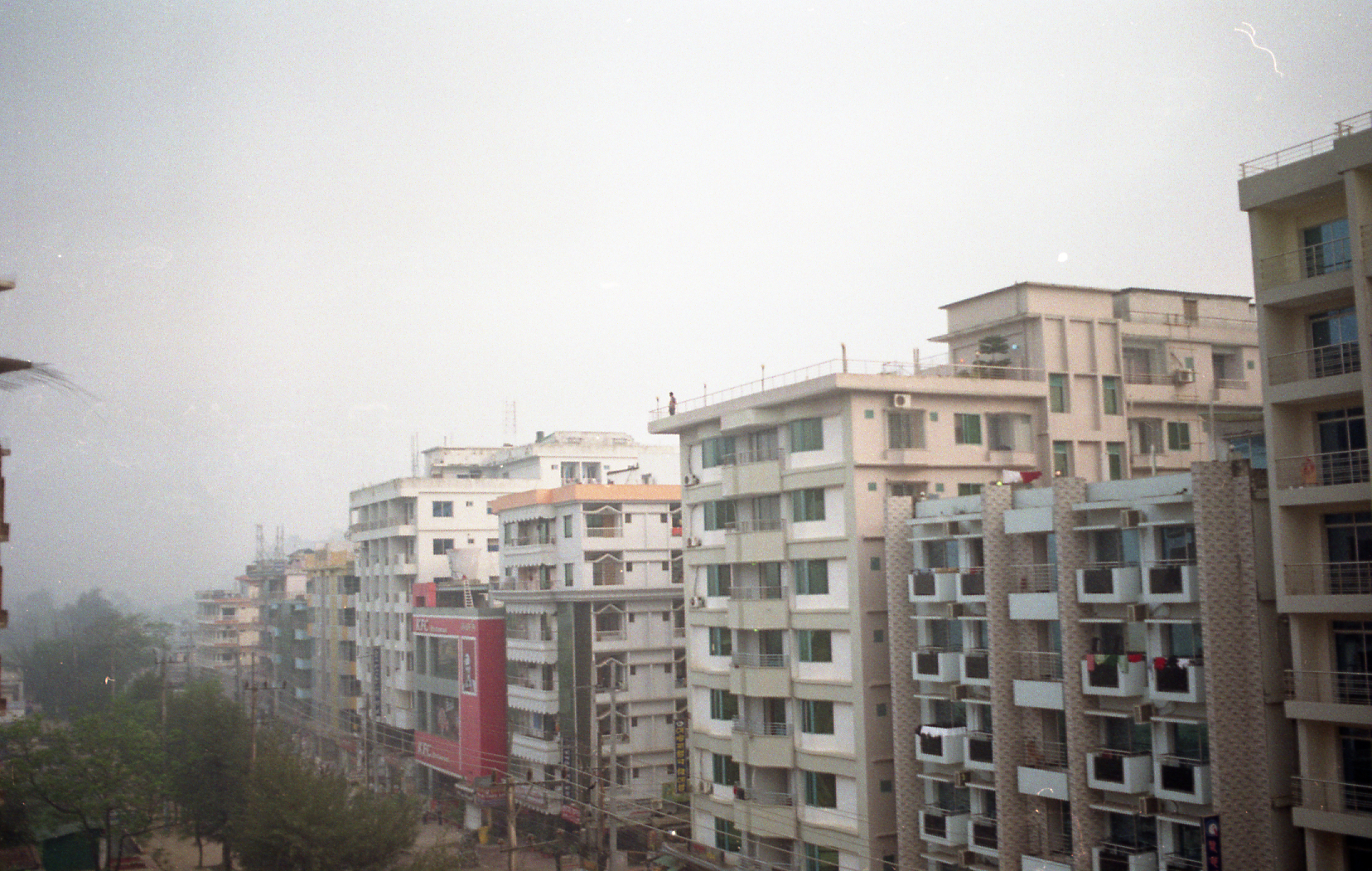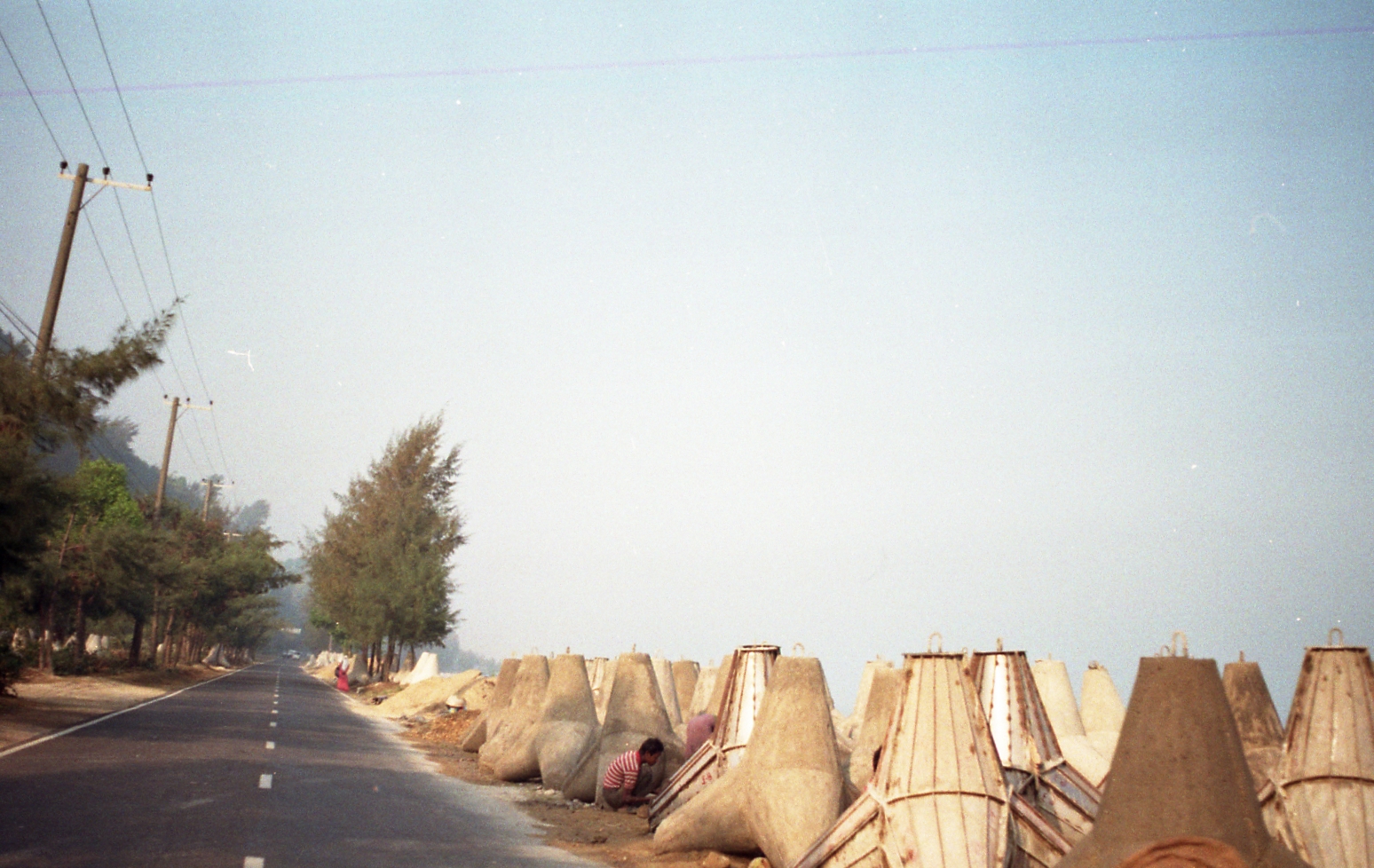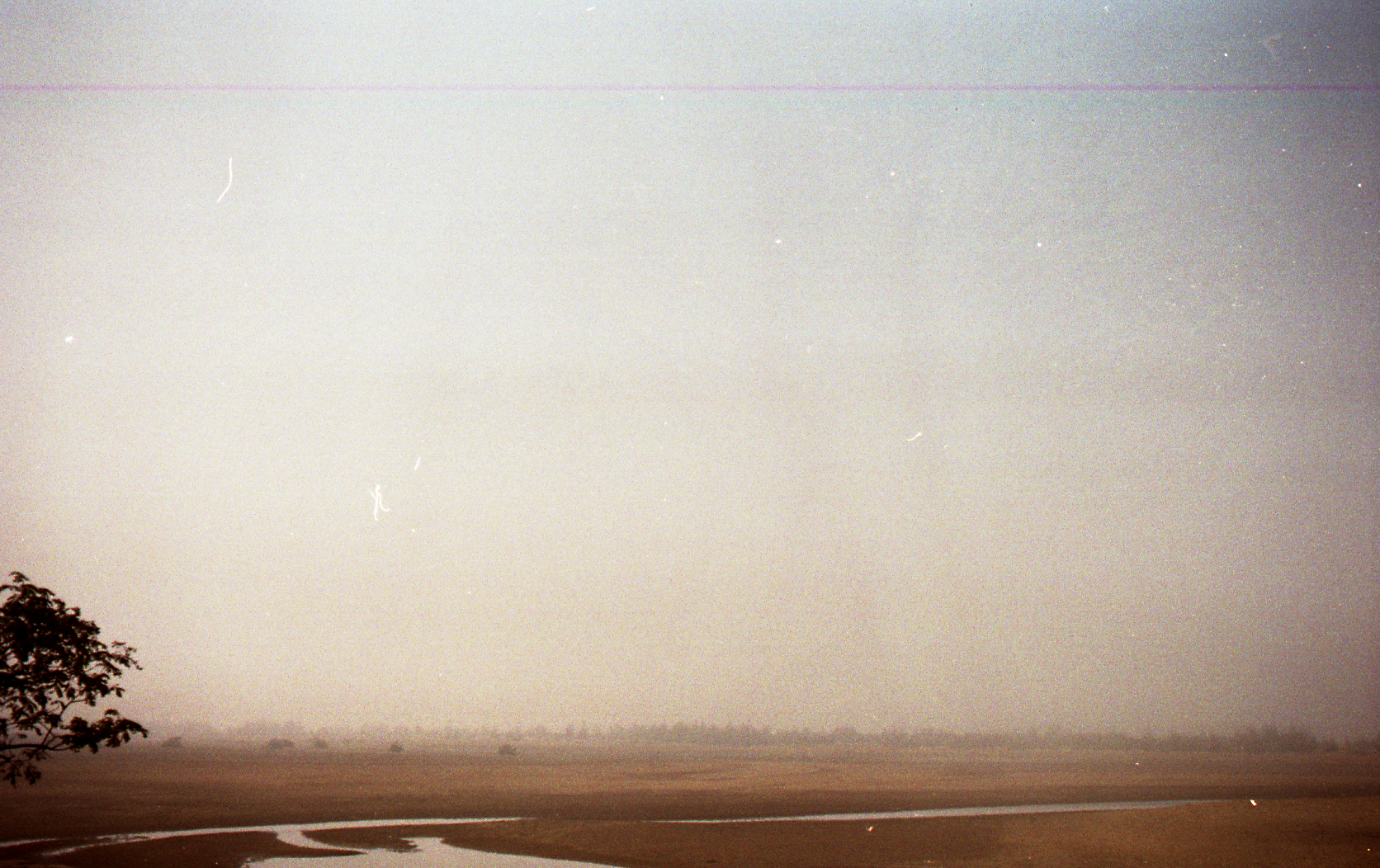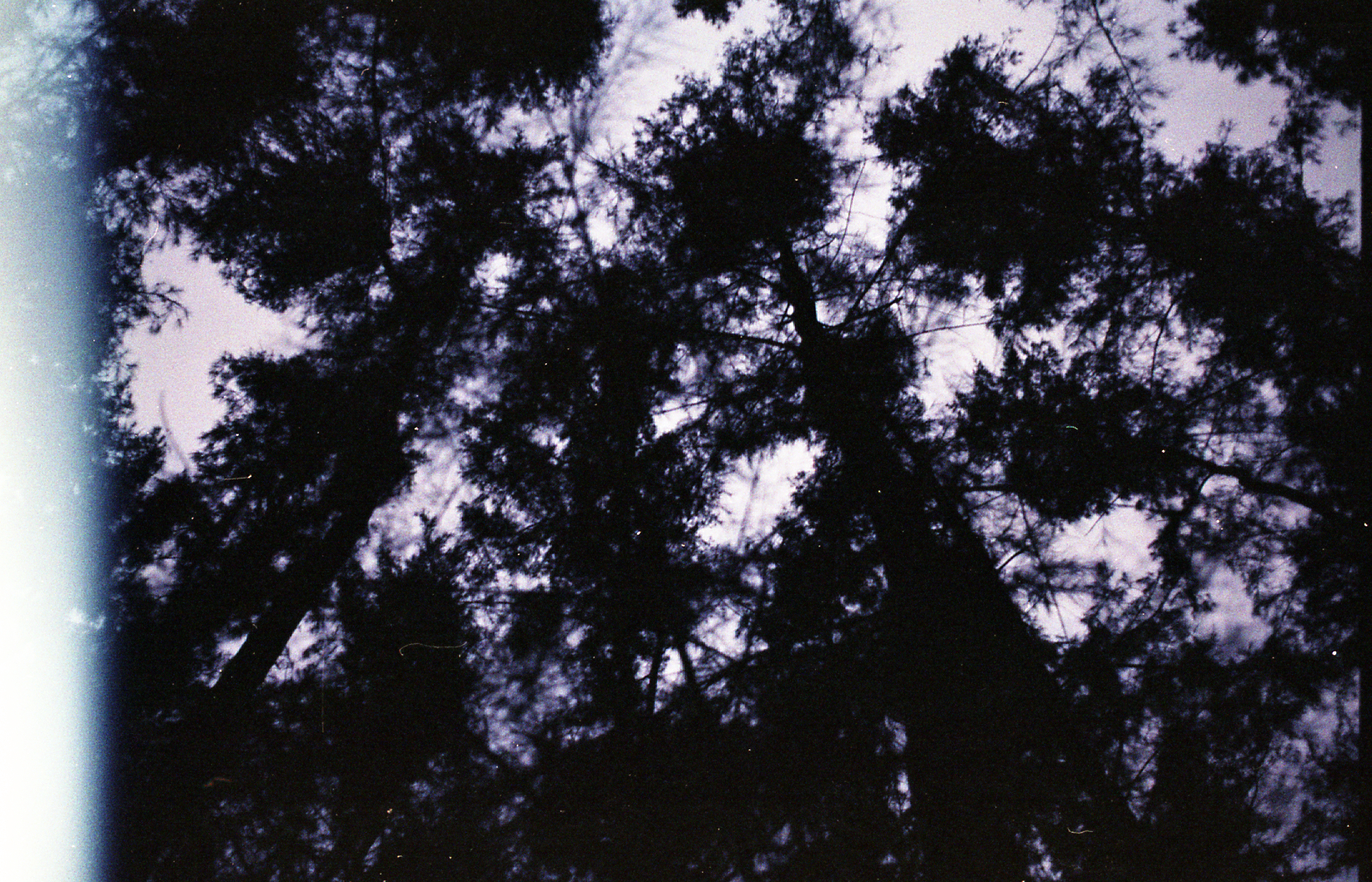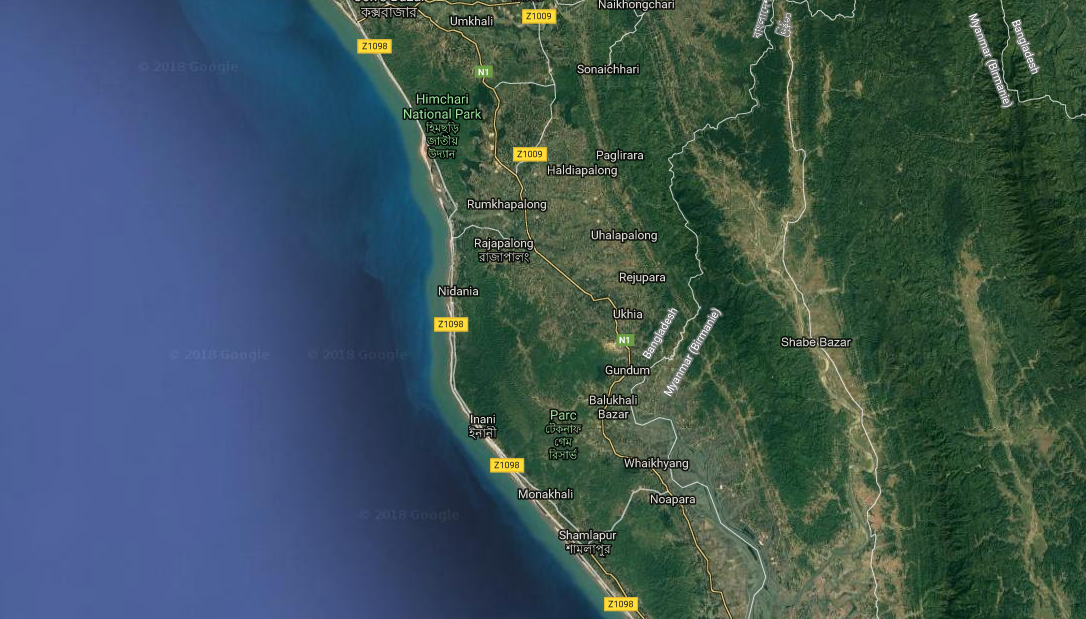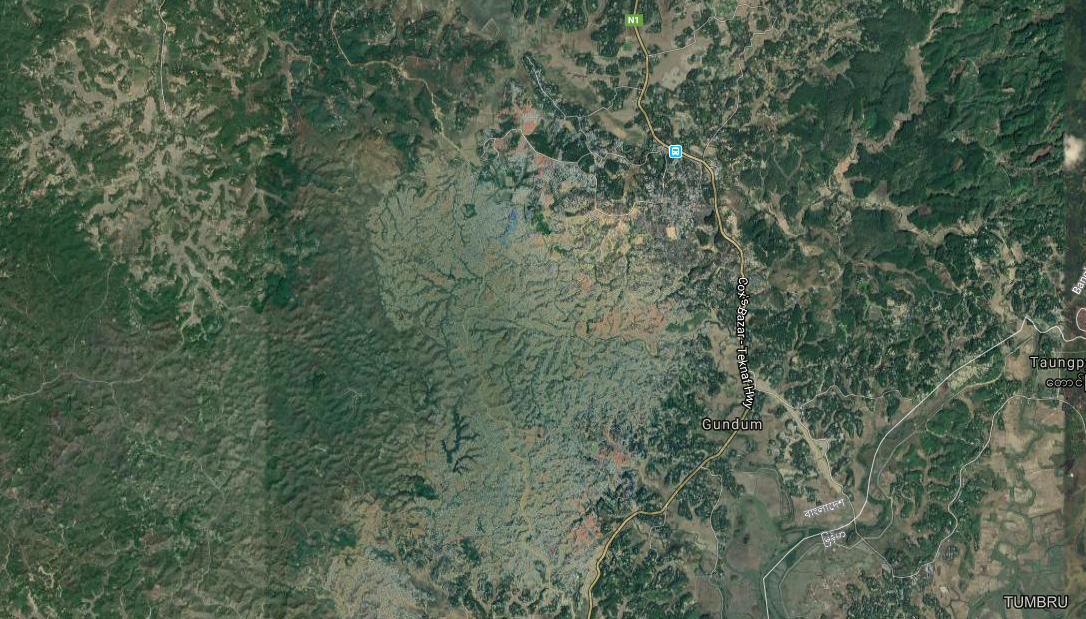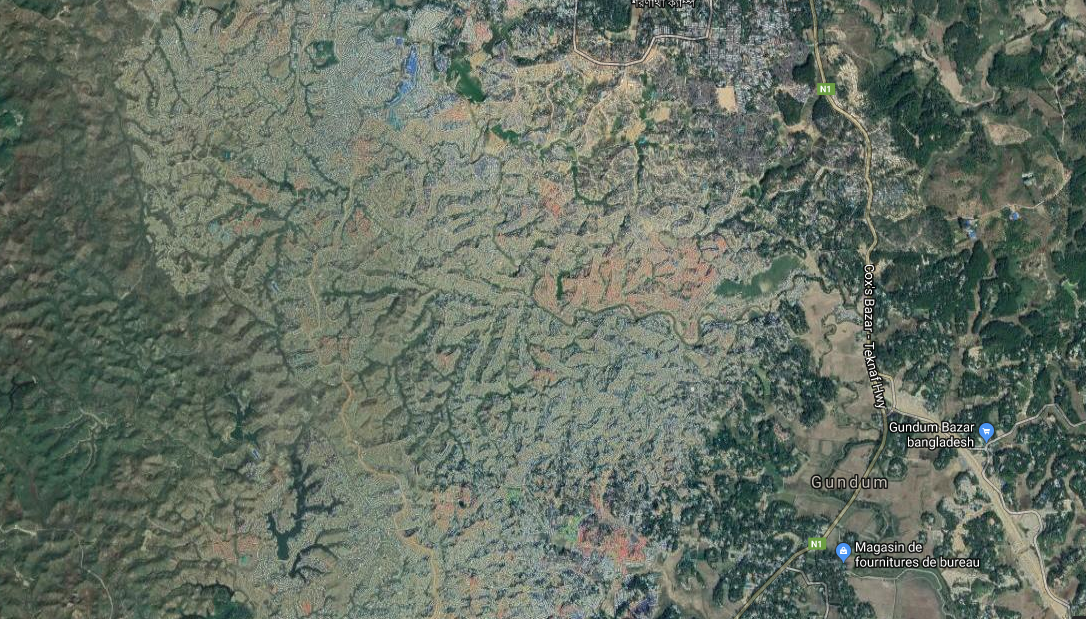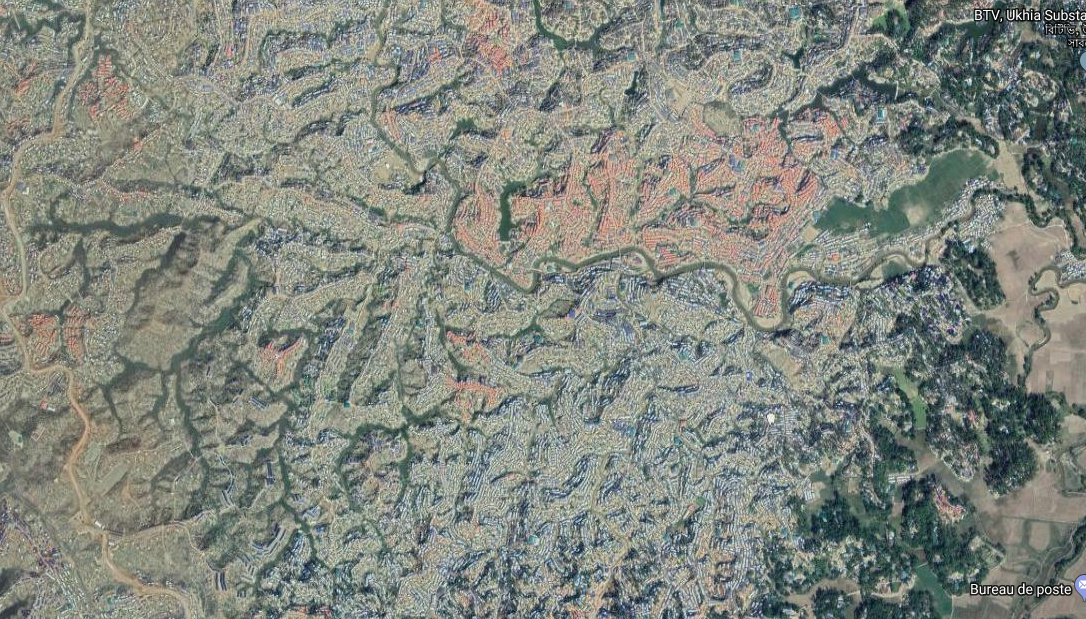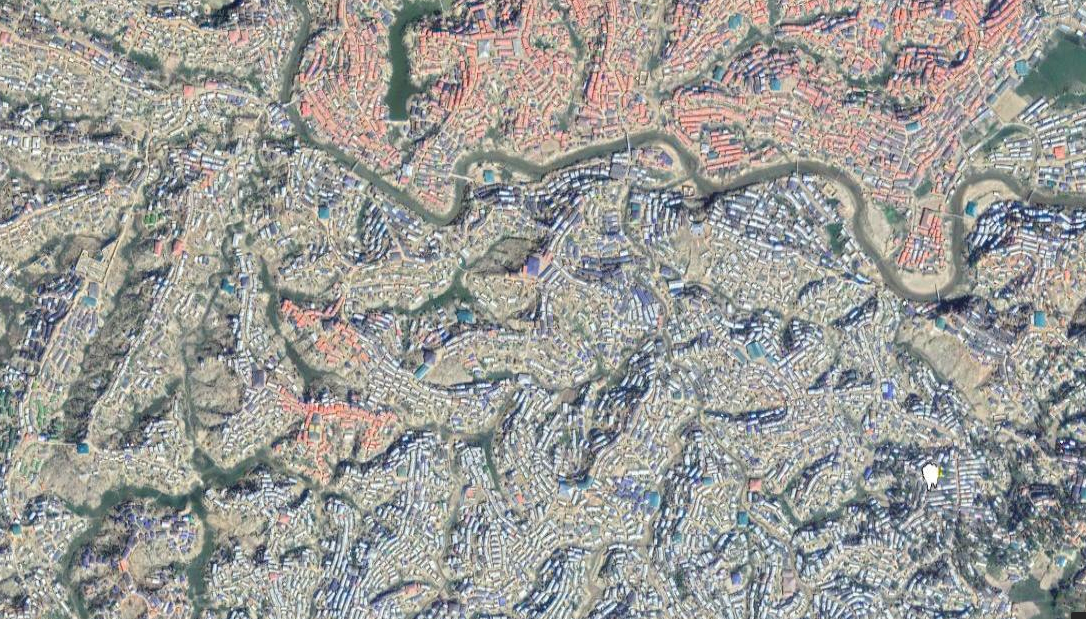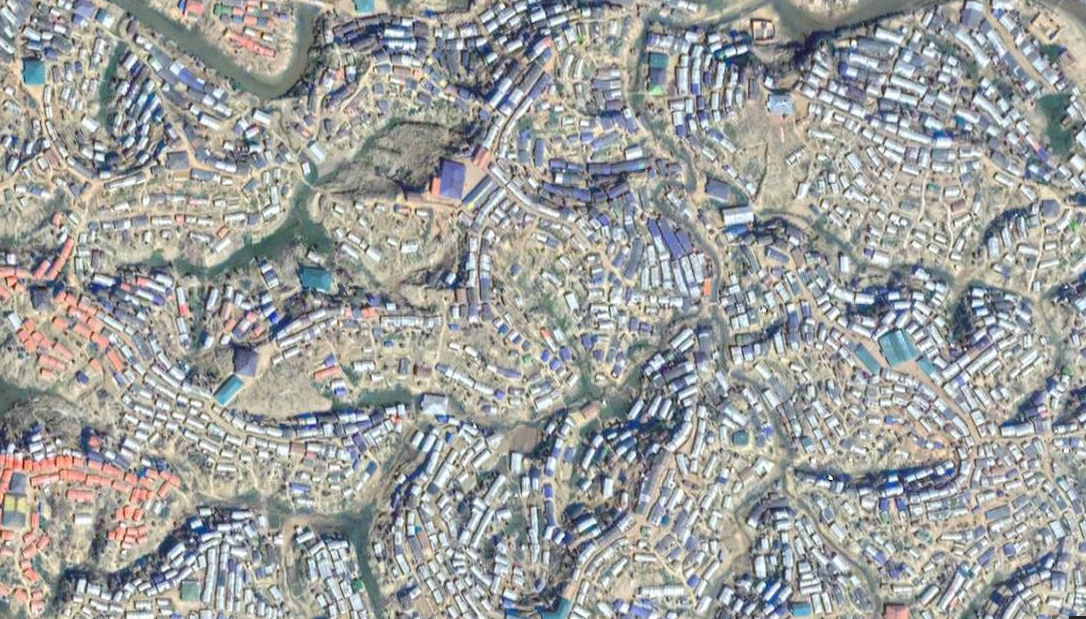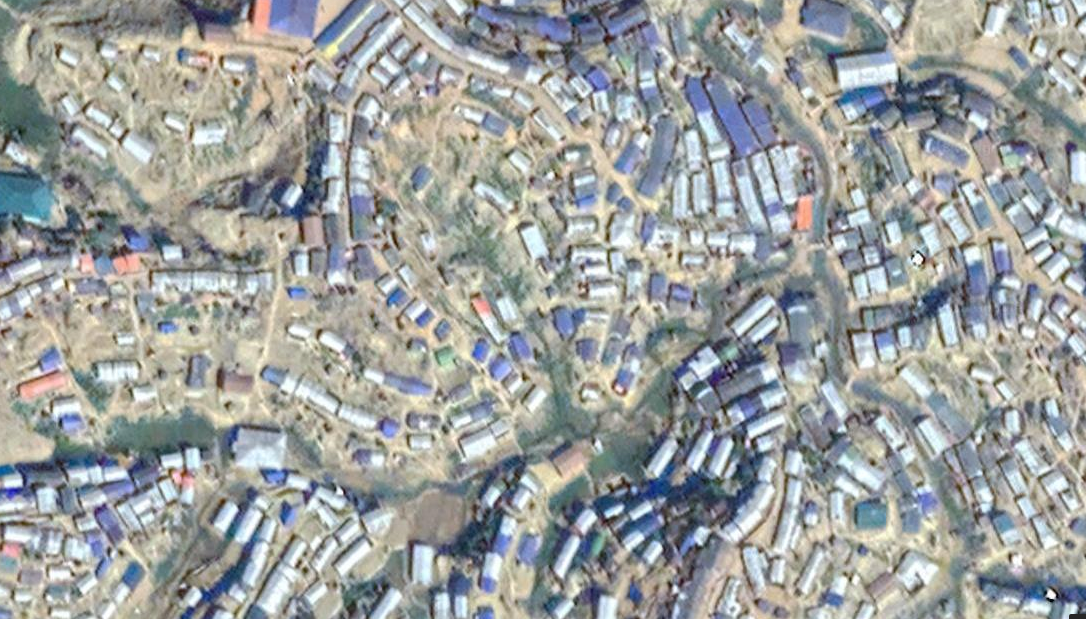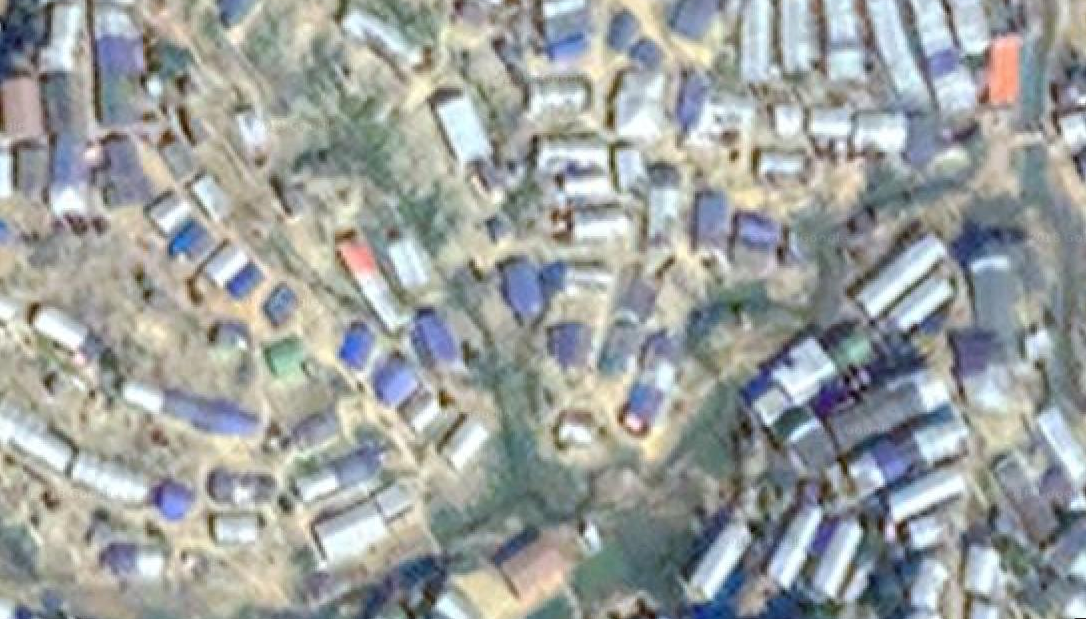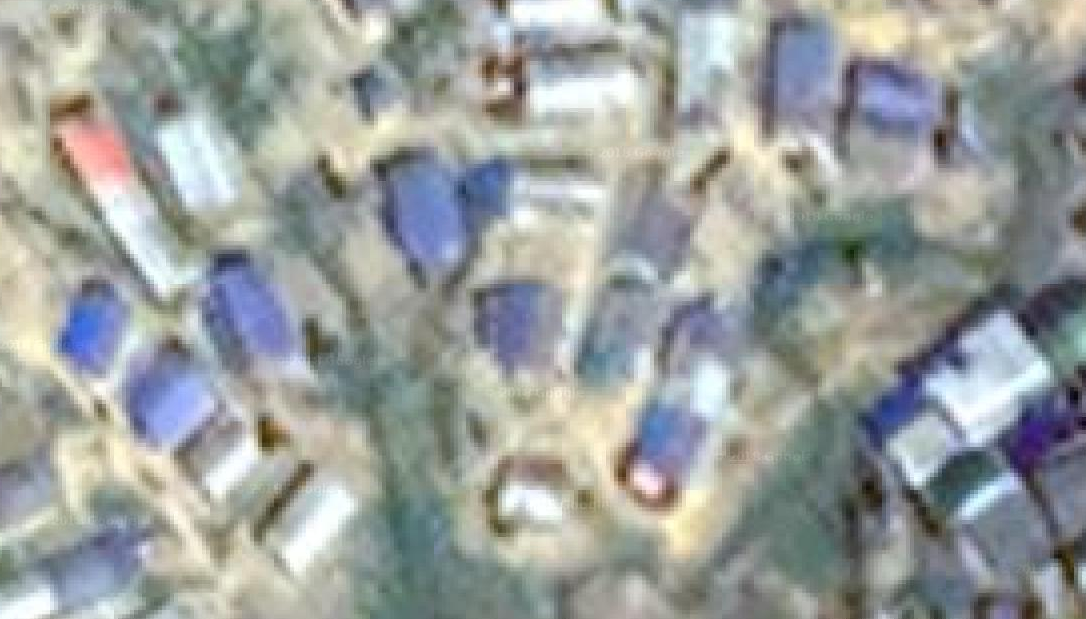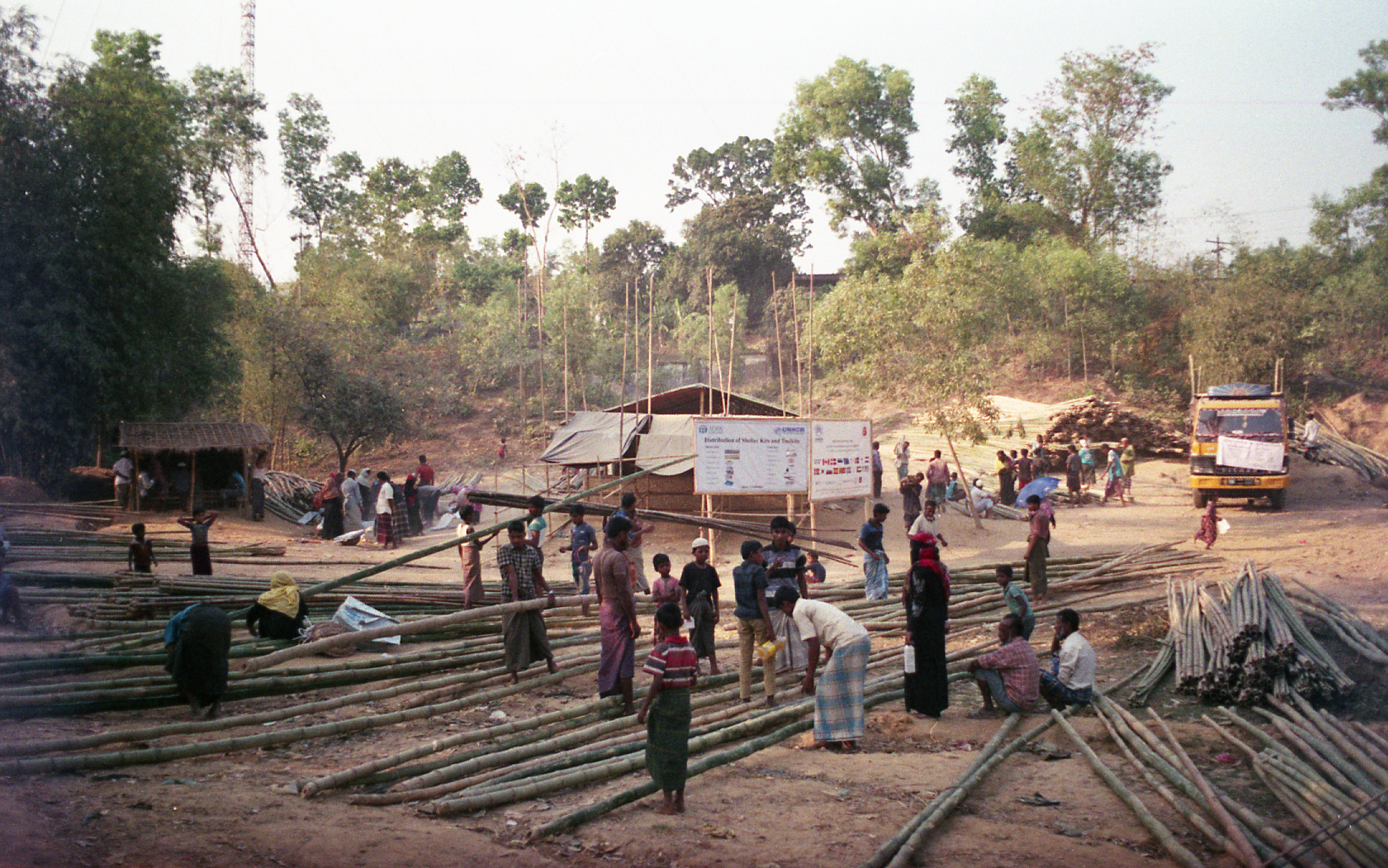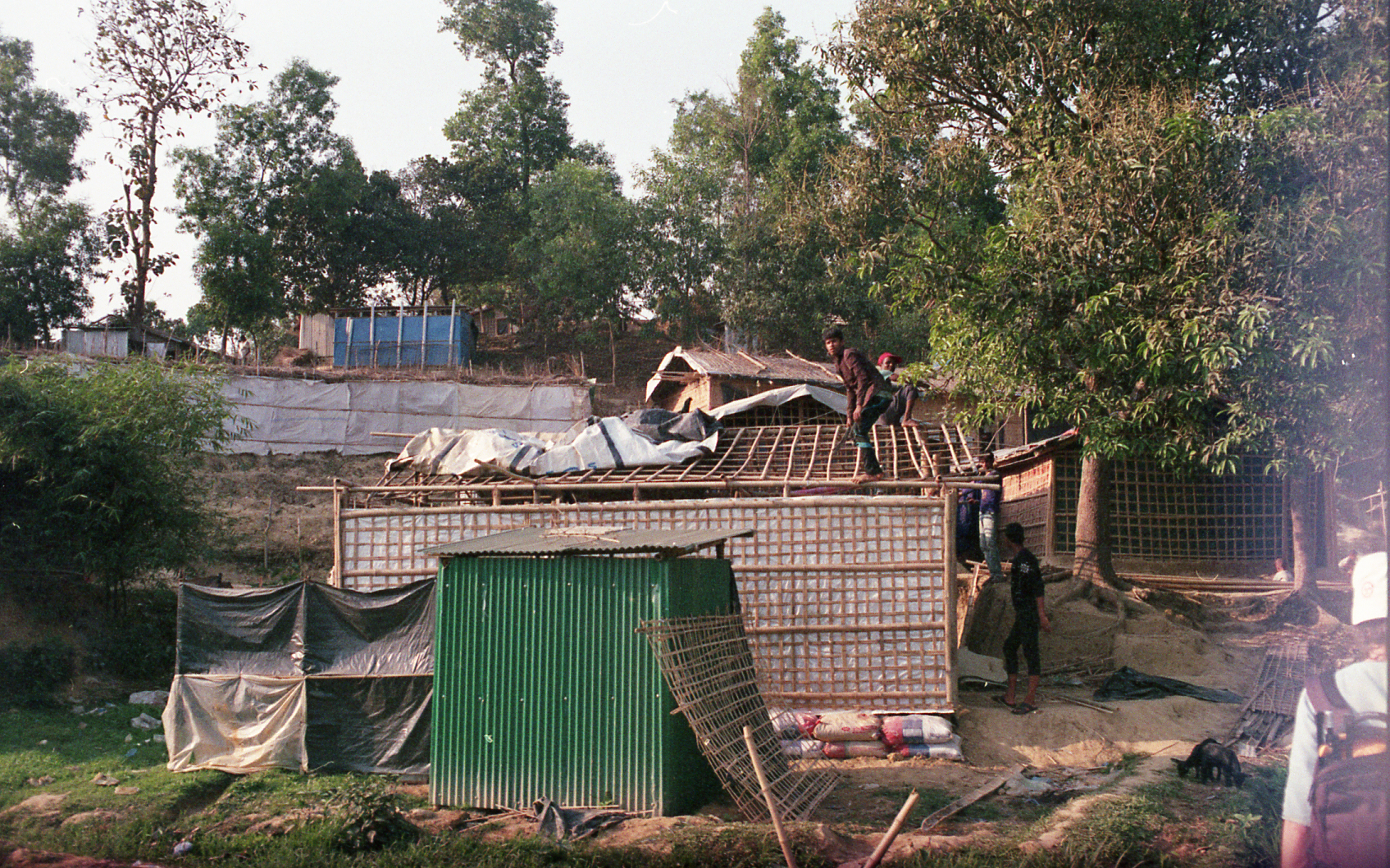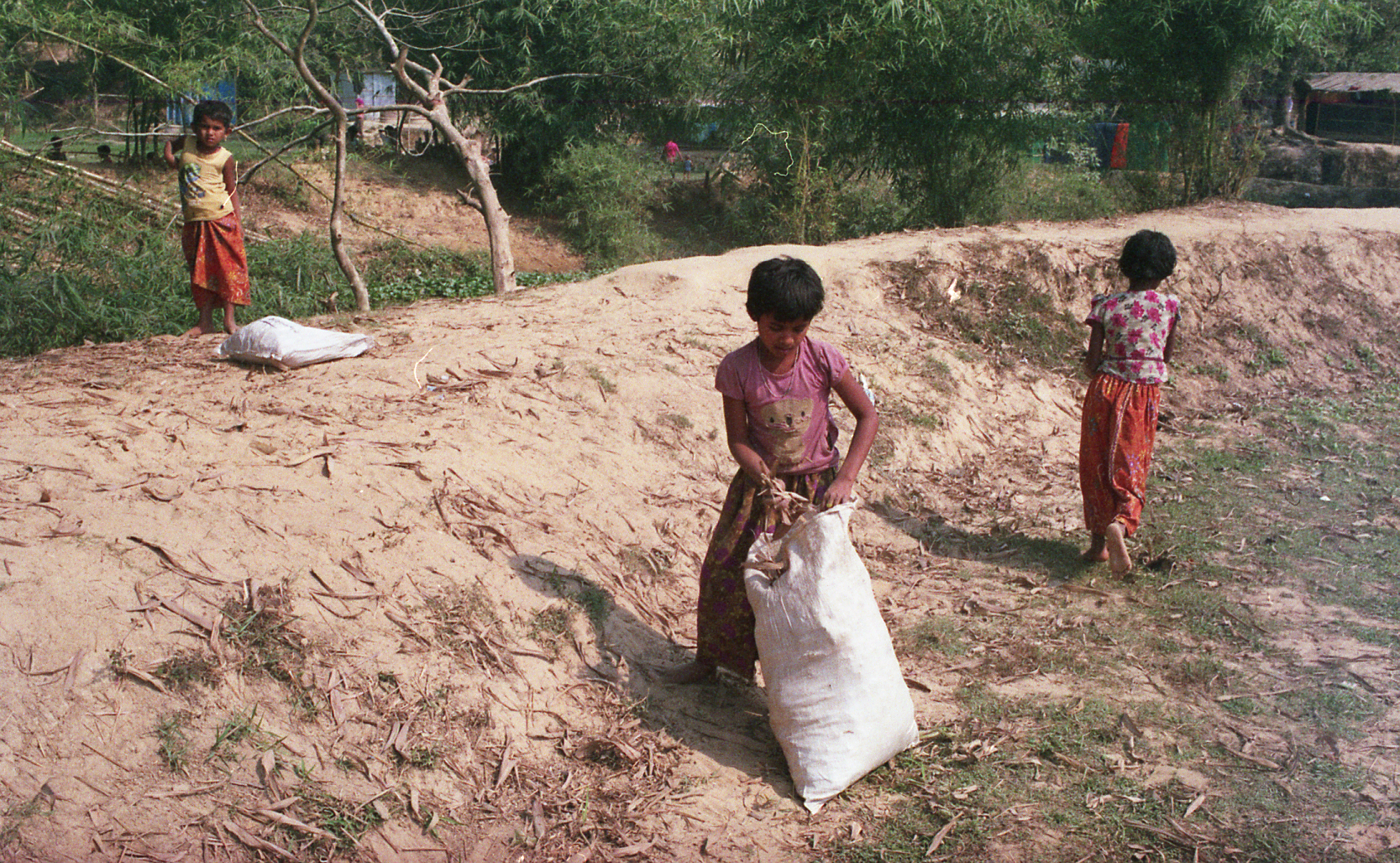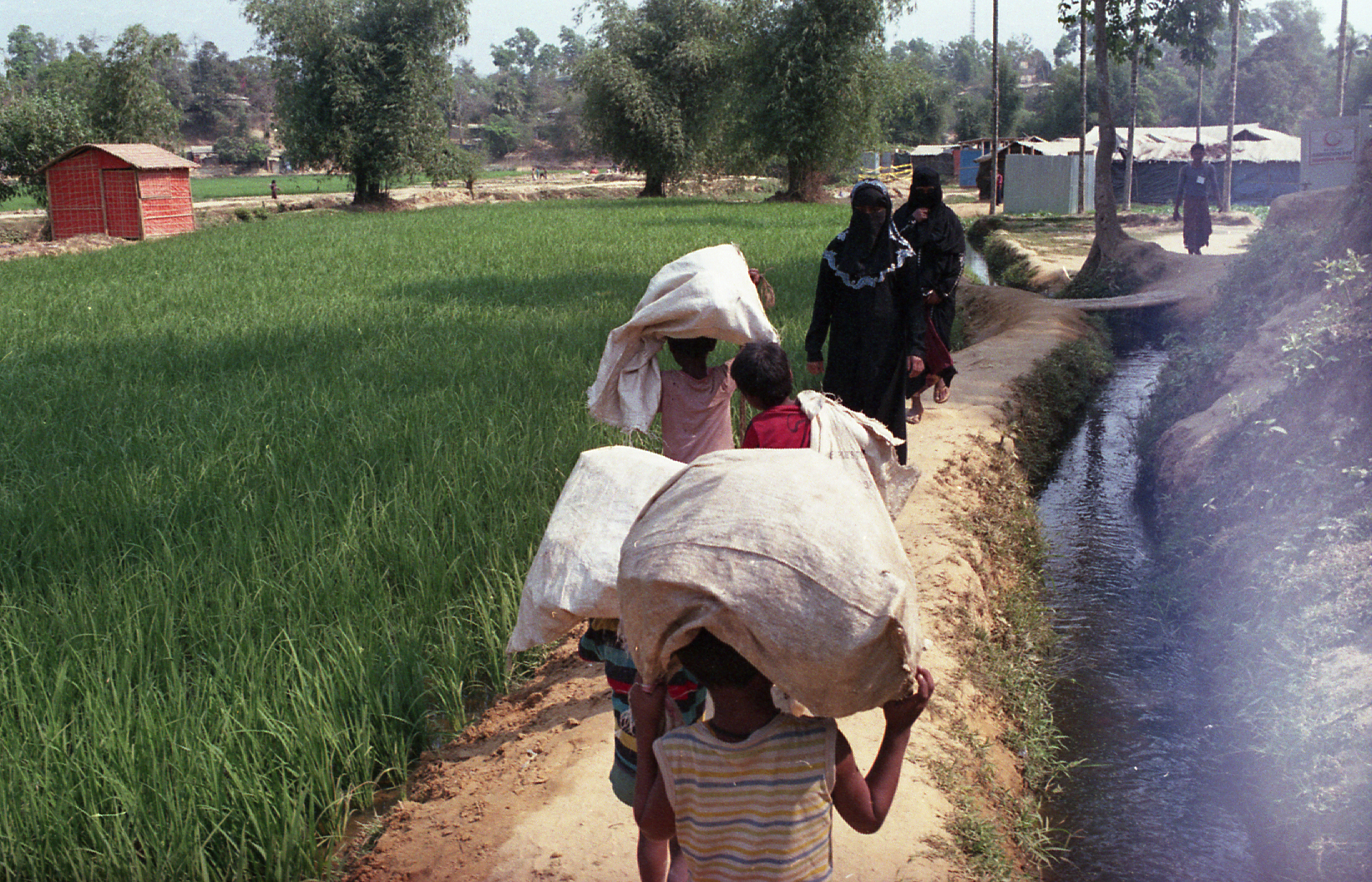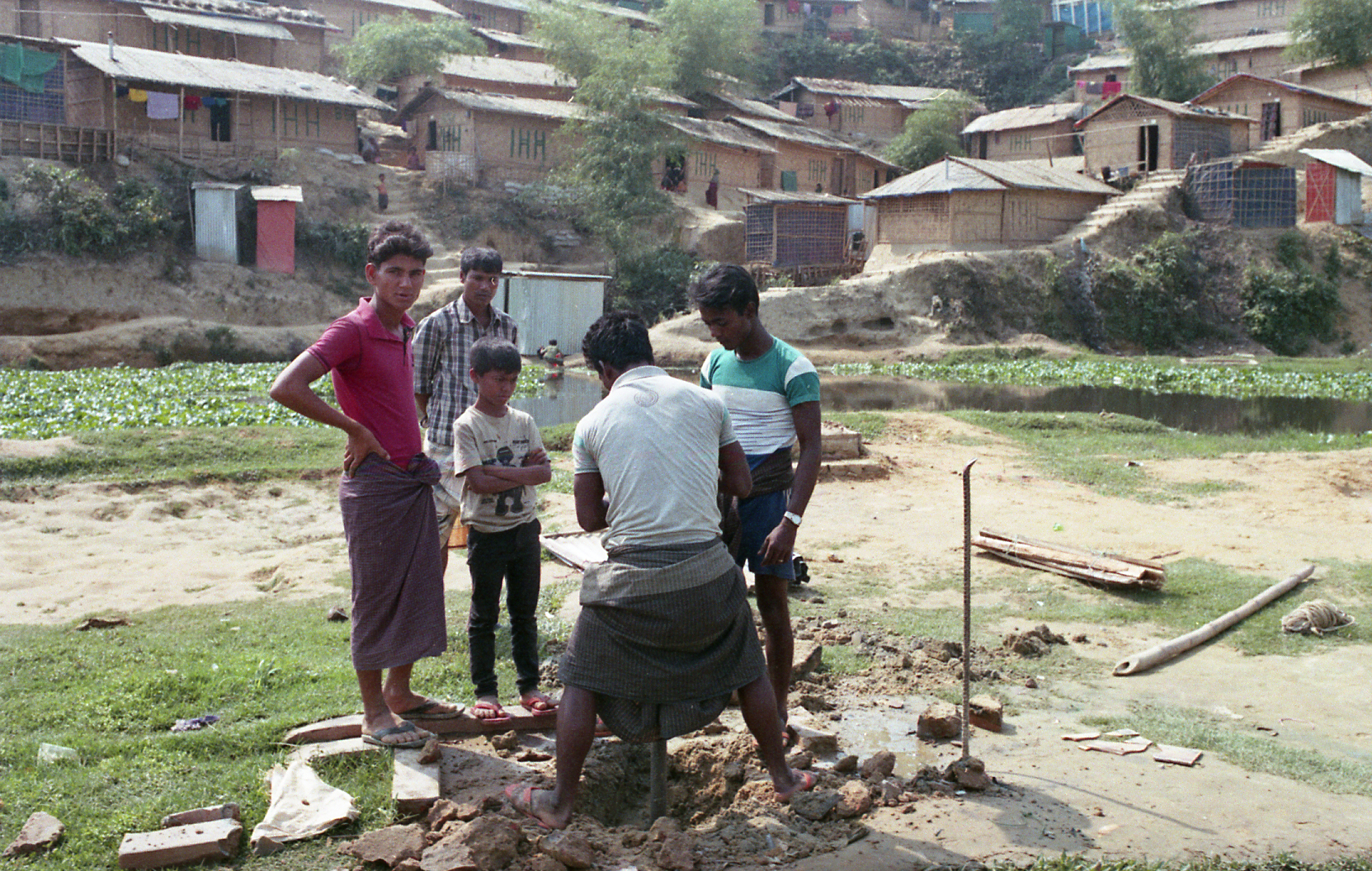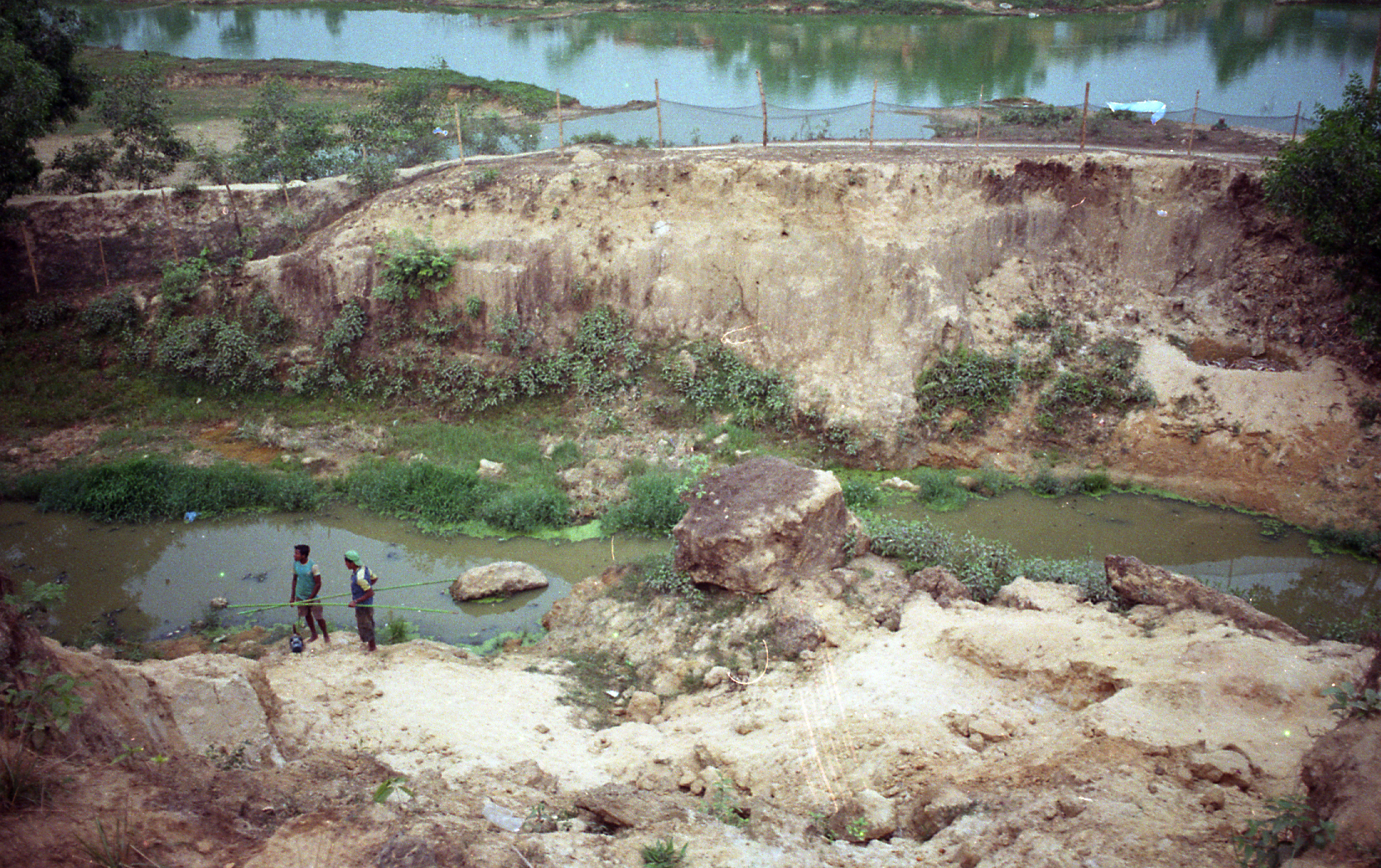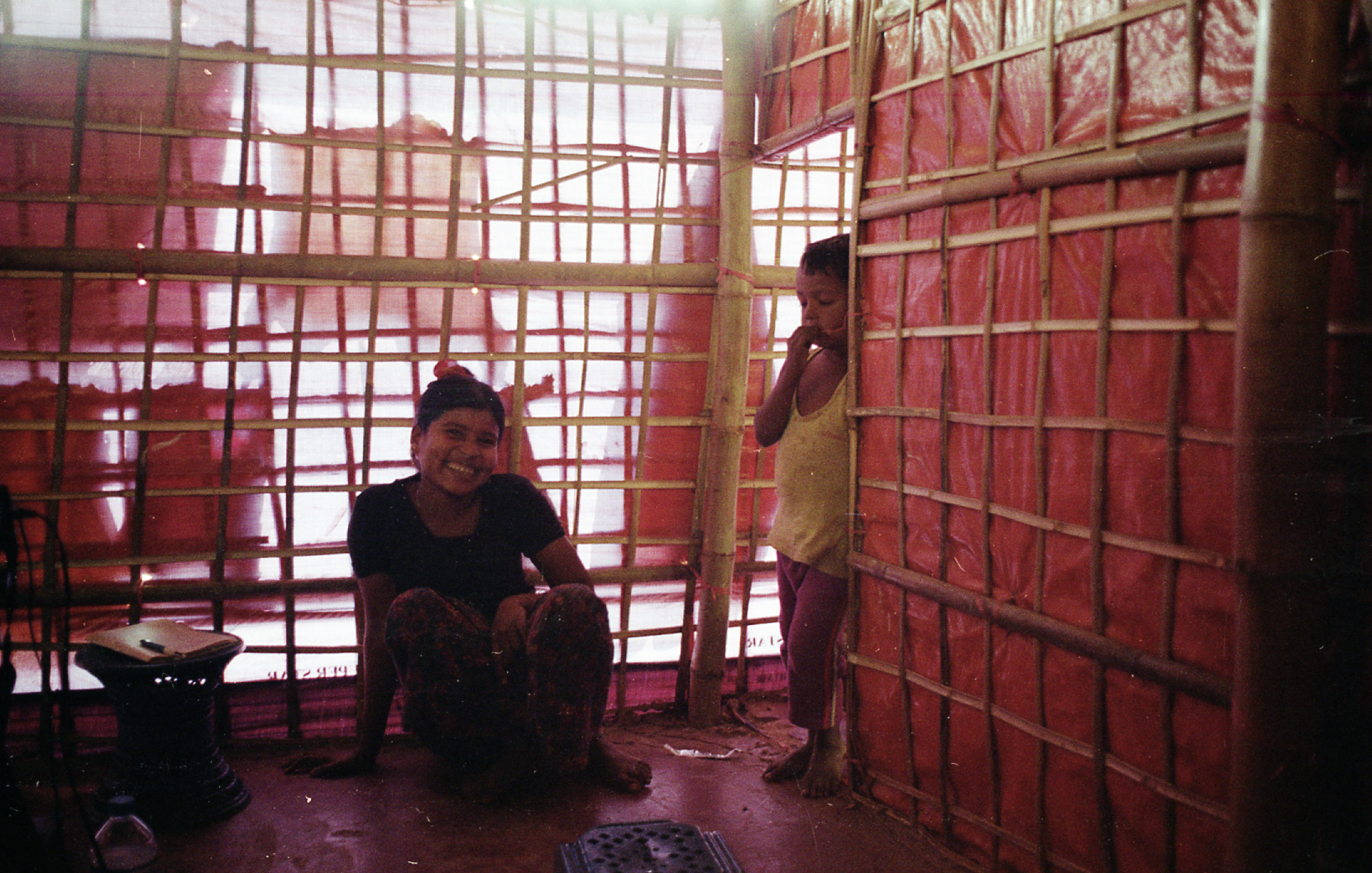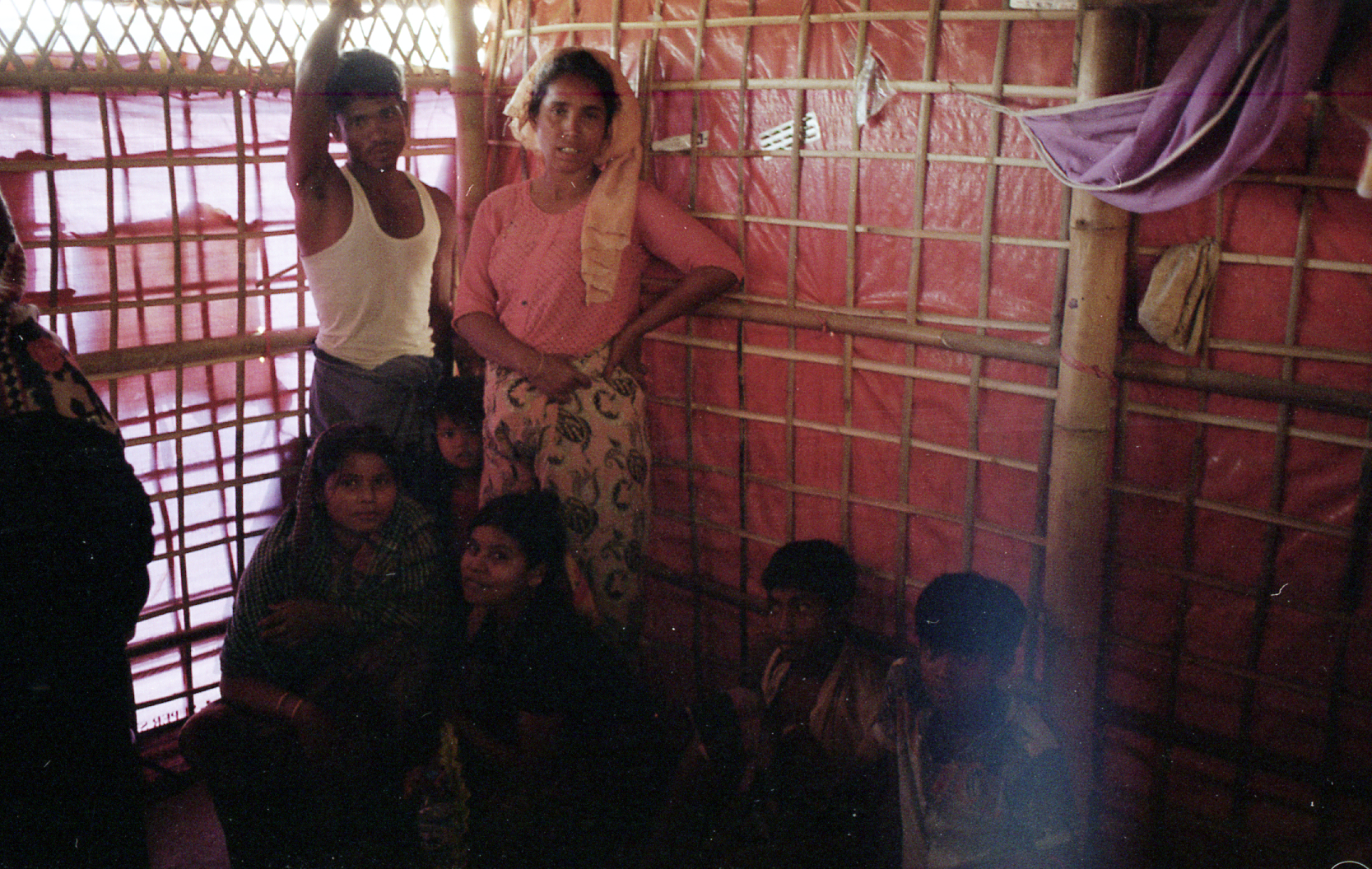À l’automne 2017, j’ai été contactée par Olga Prud’homme Farges pour échanger sur son projet documentaire étudiant les raisons de la tragédie des rohingyas. Avant de se tourner vers les spécialistes de la question, Olga souhaitait réaliser une première session d’enquête auprès des réfugiés. Nous sommes donc parties en mars 2018 au Bangladesh pour recueillir des témoignages d’enfants rohingyas dans les camps du sud du pays, à Cox's Bazar.
In autumn 2017, I was contacted by Olga Prud’homme Farges to talk about her documentary project studying the reasons of the rohingya’s tragedy. Before going to see specialists of the question, Olga wished to make a first session of investigation amongst the refugees. It took us to Bangladesh in march 2018 in order to get some testimonies from rohingya children that live in a camp in the south of the country, in Cox’s Bazar.
Dès le premier jour dans le camps, nous avons rencontré un groupe d'enfants d'une école construite par l'ONG locale Friendship. Après avoir trouvé une famille qui acceptait de nous prêter son baraquement, nous avons commencé à filmer les interviews. Dans l'après-midi du premier jour, est passé devant notre caméra un petit garçon de 5 ans, Nacer. Nous commencions tout juste à nous habituer au rythme très lent des interviews. Olga posait une question en anglais, notre traductrice la transmettait en bangladeshi à l'institutrice, et celle-ci traduisait en rohingya à Nacer. Sa réponse repartait ensuite dans l'autre sens vers l'institutrice, puis notre traductrice, et enfin Olga. Il pouvait parfois s'écouler une dizaine de minutes entre le début de la question posée par Olga, et la réponse qui nous revenait.
On the first day, we met children from a school built by the local NGO Friendship. After finding a family that would let us do the interviewd in their barracks, we started the shooting. On the first afternoon, passed in front of our camera a 5 years old child named Nacer. We were just starting to get used to the very slow rhythm of the interviews. Olga was asking questions in english, our translator were transmiting it to the bangladeshi teacher, and this one was then translating it in rohingya to Nacer. His response was going backward to the teacher, then our translator and finally Olga and I. It could sometimes take a dozen of minutes for the question to go and the response to come back.
Après quelques questions d'introduction, Nacer s'est engagé dans le long témoignage de sa fuite vers la frontière Birmano-Bangladeshie; un flot de parole déjà récité plusieurs fois, mais dont l'intensité émotionnelle ne diminuait pas. Ses respirations étaient courtes, son ton monotone mais toujours incarné, aucun silence entre ses mots. Malgré notre ignorance de la langue rohingya, celle du corps et des expressions du visage était universelle. D’abord pour Nacer, dont le ton et la gestuelle avait changé; puis pour chaque interlocutrice, dont le visage prenait un air grave au fur et à mesure des traductions. Olga et moi, alors déjà empruntes d’émotions, étions les dernières à recevoir le récit.
After a few questions as introduction, Nacer got into the telling of his escape to the Birma-Bangladeshi frontier; a stream of talk already said many times, but with the same emotional intensity. His breathing was short, his ton monotone but still incarnated, no silence between the words. Despite our ignorance of the rohingya language, the body and face expression was universal. First for Nacer, whose ton and moving was different; and for each listener, whose faces were changing to a serious look as the translations were going by. Olga and I, already moved, were the last one to received the story.
Nacer était donc le 4ème enfant que nous filmions, et commençait déjà à se dessiner un schéma dans l'attaque de la junte birmane sur le peuple rohingya. La traductrice nous transmettait les détails : le feu, les femmes emmenées, la fuite, les membres coupés, les lacs remplis de mains, de pieds et de sang, la boue jusqu'au coup dans la mangrove, la nuit dans la forêt, la traversée du fleuve et enfin l'arrivée au camp. L'histoire se répétant, une terreur naissait en nous au fur et à mesure de la découverte d'une entreprise très bien organisée, synchronisant des attaques identiques et simultanées dans les villages de l'État d'Arakan.
Nacer was the 4th child that we were filming, and a scheme in the attack of the military junta on the rohingya people was already getting draw. The translator was transmitting us the details : the fire, the taken women, the escape, the cut members, the lakes full of hands, foot and blood, the mud till the neck in the mangrove, the night in the forest, the crossing of the river and the arrival in the camp. The history was repeating itself, and terror was born in ourself, discovering the very well organised entreprise, synchronising identical and simultaneous attacks in the villages of the Arakan state of Myanmar.
Parfois, dans un soucis de précision et pour mieux comprendre ce qu'il s'était passé, naissait une discussion entre Olga et les traductrices sur un détail du témoignage de l'enfant. Ce jour-là, c'était le type de couteau utilisé pour couper les membres qui faisait débat. Était-ce une hache, une scie, ou un couteau de cuisine? Et si c'était un couteau, quelle taille avait-il? Après quelques minutes de discussion, personne ne semblait d'accord. Un court silence, comme si tout le monde pensait la même chose. Olga dit alors : " lui, il sait ", montrant Nacer d'un regard. Chacun d'entre nous s'est retourné, le cœur serré. La question est donc partie, d'abord en anglais, puis en bangladeshi, enfin en rohingya. La réponse fut immédiate et silencieuse: d’un geste de la main, il montra la taille de son bras.
Sometimes, wishing to be precise and to better understand what happened, a discussion was starting between Olga and the translators about a child testimony’s detail. That day, it was the type of knife used to cut the members that was discussed. Was it an ax, a saw or a kitchen knife? If it was a knife, how big was it? After a few minutes of discussion, nobody seemed to agree. A short silence, as if everyone was thinking the same thing. Then Olga said : “him, he knows”, showing Nacer with a look. Each one of us turned with tighten hearts. The question started its way, first in english, then in bangladeshi and finally in rohingya. The response was given straight away but silently: with a move of his hand, he showed the size of his arm.
